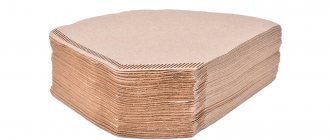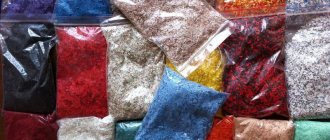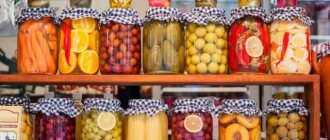Coffee lovers often keep coffee supplies at home. They buy or order them for future use so that they can enjoy an invigorating drink if they wish. But if storage conditions are not followed, the original taste and aroma properties of the grains or powder are lost. To avoid having to throw away supplies ahead of time and spend money on new ones, read up on how to store instant coffee, as well as beans, roasted and ground.
How to properly store coffee at home
The assessment of coffee quality is determined by the results of organoleptic analysis in terms of appearance, color, aroma and taste. The ground and soluble product is obtained through special processing of natural grains.
The maximum amount of oils in grains can preserve the nutritional content for a long time.
Instant coffee prepares faster than ground coffee. However, in terms of aroma and taste, the ground freshly brewed drink is more rich and pleasant.
Coffee is adversely affected by 4 main factors that negatively affect its quality:
- Light.
Constant direct light and sunlight, being a catalyst for unwanted chemical processes, lead to the loss of aroma and taste of coffee;
- Air.
The quickly volatile oils contained in the grains are destroyed upon contact with air due to oxidation;
- Temperature.
High temperatures evaporate the oil contained in coffee and destroy the caffeine;
- Humidity.
The hygroscopic properties of the product are capable of absorbing moisture from the air with further loss of taste and aroma.
General rules for storing coffee at home are to comply with the following requirements:
- darkened closed location;
- maintaining 50-60% humidity;
- do not exceed the ambient temperature above 23°C;
- contents in special bags, packaging, containers with an airtight tight-fitting lid.
During long-term storage, coffee may lose its taste and aroma. It is most reasonable to buy a small amount of the product that you can drink in 1-2 weeks.
Storage rules
It would seem, why focus on such trivial things as storing coffee? Isn't a store-bought package or a jar in the kitchen cabinet enough for this?
Let's figure it out together.
Coffee storage can be long-term or short-term. Connoisseurs who prefer certain varieties or special roasting are sometimes forced to buy them for future use. It's not always possible to buy really good beans, and it's even harder to get high-quality roasted beans - especially if you're not a fan of the Italian version. So you have to stock up for a long time, purchasing on occasion or even ordering from far away. Naturally, such a reserve must be preserved with minimal loss of taste.
If you do not have any special preferences, and you are quite satisfied with the quality of the grains purchased at the nearest store, then you are concerned with issues of short-term storage.
No matter how much time coffee spends in your kitchen, you need to know exactly the basic laws of preservation of this natural product.
A number of factors have a destructive effect on volatile aromatic fractions and flavor bouquet. We have arranged them in descending order of their destructive influence.
- Air
- Moisture
- Warm
- Light
One or more factors can quickly spoil aromatic fruits or delicate grinding if storage rules are not followed.
What happens if stored incorrectly
- Grains oxidize in air, change and even lose their taste, since it is the oil fractions that are responsible for the taste characteristics that undergo oxidation first.
- The aroma weakens and then completely disappears, since aromatic compounds are very unstable and evaporate first.
- The grain structure becomes denser, this leads to the formation of a thin and unstable foam with an unpleasant sour odor.
- Coffee beans absorb moisture, which affects the taste characteristics. Mold quickly appears on wet beans.
- Humidification and oxidation together can lead to grain decomposition.
- Coffee absorbs all foreign odors, which affects its quality.
Before we move on to the specific rules for storing different types of coffee, we will formulate general principles that must be followed if you want to enjoy high-quality coffee.
Separate storage.
For coffee, you need to set aside a special container that will not be used for other products. If you are preparing a drink from different varieties, then they should be isolated from each other so that the grains do not lose their original aroma.
The storage location must be protected from the sun, drafts and temperature changes.
That is, a window sill, an open shelf near a stove or sink are contraindicated. You will have to choose a well-protected place with constant humidity and natural ventilation.
Storing Roasted Coffee Beans at Home
Roasted coffee beans are a delicate product that cannot be stored for long. When using multi-layer vacuum packaging, the oxidation process is prevented: the contained gas vent valve removes carbon dioxide from the roasted beans.
The packaging is carefully closed and does not allow air inside. Opened vacuum packaging should be used for up to 3 weeks.
You can extend the shelf life of an opened coffee package in the refrigerator by placing it in a glass container. A glass jar with a tight lid not only ensures better preservation of the grains, but also protects against foreign odors.
Shelf life of roasted beans:
- in vacuum packaging - 12 months;
- in a glass jar - up to 6 months;
- in opened store packaging −14 days.
How long does coffee last?
The shelf life depends on the location and type of the drink itself. If you are in places with open rays or high moisture, coffee will quickly lose its quality. If the storage location is used under all conditions, then the period will depend on the degree of grinding and the type of grains.
Shelf life of coffee in unopened packaging
It should be understood that expiration date and shelf life are slightly different concepts. The expiration date indicates the period of preservation of all the qualities of the drink, but the shelf life indicates the time for use, and if it passes, the product will need to be thrown away.
Instant coffee has the longest shelf life - up to 5 years, followed by capsule type - up to 2 years, whole or ground beans - up to six months. After opening the package, a new storage period begins, which is significantly reduced.
Shelf life of unroasted coffee
In the storage category, unroasted coffee is superior to heat-processed beans because its shelf life is significantly longer. Whole raw coffee beans often last up to 1 year, and some varieties last up to three years. In five years they may not disappear, but they will lose their taste.
Before purchasing, read the packing date on the packaging - it will indicate the exact time of collection. When buying green coffee beans by weight, pay attention to their appearance, this will allow you to approximately know their age:
- the grains must be whole, without a large number of chips;
- the outer shell should be velvety and uniform, without any special shades;
- the smell should not be too rich, but on the contrary, with herbal undertones.
If the grains differ in appearance, it means they were collected at different times, and accordingly their quality will be low.
Shelf life of roasted coffee beans
Roasted grains are inferior in terms of time to green ones, so to maximize the preservation of taste, observe the required conditions. Most often, roasted coffee is stored in three types:
- Unsealed container. A simple and practical way to store small quantities of grains. The maximum shelf life is 14 days.
- Sealed paper bags. Subject to the rules of absence of moisture, direct sunlight and sealing, the maximum shelf life will be 6 months.
- Heat sealable container. These bags are designed for storing coffee beans. They are equipped with special filters for removing gases; in addition to their high tightness, the shelf life reaches 1 year.
How long can coffee beans be stored in an open package?
Once the package is opened, the shelf life is significantly reduced. When exposed to air, roasted grains quickly lose their taste, so it is recommended to use them within 14 days. You can extend their storage by 3-5 days by pre-portioning them in an airtight container.
Average shelf life of coffee beans
There are established shelf life periods for coffee, which must be followed despite the manufacturer’s statements:
- green grains – up to 1 year;
- roasted grains after opening – up to 14 days;
- in vacuum packaging – one and a half years;
- in a tight sealed container - up to 1 year.
The above average periods are achieved only if storage rules are observed.
Shelf life of green coffee beans
Green coffee is often purchased in large quantities as it can keep its quality for about 12 months. When purchasing in closed bags, the date of packaging will be indicated, but when purchased in bulk, you will have to independently determine the quality and age of the grains.
Fresh green seeds have a herbaceous smell and velvety color, without a film. They should feel loose and easy to break to the touch. However, the main indicator is one color, since grains of different shades indicate different ages. Their lifespan will be shorter and, accordingly, the aroma and taste will be weaker.
How long can coffee beans be stored in a glass jar?
When pouring grains into a glass jar, there will be an interaction with oxygen that cannot be prevented. Gases will disappear from fresh beans after roasting, which is a good indicator, but interaction with oxygen will start the oxidation process and, over time, the taste will change for the worse.
The shelf life in a glass jar is practically no different from other packaging, the main thing is that it is not exposed to the sun's rays. It should also not be placed in the refrigerator due to condensation.
How long does coffee last in a thermos?
The shelf life of the aroma and taste of coffee in a thermos depends on the quality of the container itself and its ability to retain heat. The taste will remain until the water cools. You can brew coffee immediately or take boiling water with you and brew each portion separately.
The second option will better reflect the taste of the drink, since it will be freshly brewed, but it is also less practical. As the water cools, the coffee will brew weaker and, accordingly, the taste will become worse. Choose the most profitable option for yourself.
Where can you store ground coffee?
After grinding, the vulnerability of the coffee increases significantly. At home, it can be stored in the same containers in which it was purchased. Special packaging optimally protects against the effects of negative factors:
- factory sealed packaging - 10-12 months;
- vacuum packaging - 18 months;
- multilayer bag with valve - 12 months;
- jar with a tight-fitting lid - 12 months;
- foil package - 12-14 months.
Open packaging preserves the quality of ground coffee for up to 10 days.
What should I store it in?
Let's look at what grains should be stored in to avoid their destruction.
Often the drink is stored in the same container in which it was purchased. Plastic, ceramic, and glass containers are also used for storage. In the latter case, it is better to give preference to opaque products. The option with tin cans is also common. We propose to consider the main pros and cons of each type of container.
Packages
Foil bags with a zipper and a valve are the ideal “medium” for storing coffee beans. Coffee is able to instantly absorb odors because its beans have a porous structure. Thanks to such containers, the product will not receive aromas from nearby spices and herbs on the kitchen shelf. Such foil bags do not allow air to pass through, and the presence of a valve on the package allows gases to escape from the coffee beans easily and freely.
The packaging can also be twisted to remove excess air. This will protect the grains from oxidation of the essential oils that are inside. But it is essential oils that are responsible for the taste and aroma of a freshly brewed drink. And another important advantage of unsightly-looking foil bags is that they provide reliable protection of grains from moisture and light.
Banks
In some aspects, jars are inferior to bags, but are still considered a perfectly acceptable container for storing freshly roasted coffee beans. True, this applies to ceramic and glass containers. When choosing them, it is recommended to give preference to products with hermetically sealed lids. It is desirable to have a silicone gasket (it minimizes the possibility of air getting inside).
Such products, as well as high-quality bags with a zip fastener and a valve, do not transmit odor to the grains and reliably protect the product from moisture that destroys it. If you decide to store coffee in glass, then choose an opaque glass container. If you were unable to find such a container, then at least place it in a dark place where ultraviolet rays and artificial lighting do not penetrate.
Also, when using cans, you should adhere to the following rules:
- You should not pour the coffee into the jar immediately, but several days after roasting. Thanks to this, gases will leave the fresh grains.
- When stored in a jar, a small amount of air inevitably gets inside. Because of this, the process of oxidation of essential oils starts. Of course, this is not the most serious factor for giving up cans, but it is still a reason to think about it.
Plastic and metal containers
It is this type of container that is considered the least suitable for storing high-quality coffee beans. The materials from which they are made can impart undesirable flavor notes to the coffee.
How to store instant?
Instant coffee is a short-lived product. It contains a small amount of natural substances that give coffee its unforgettable aroma.
When opening the purchased product, it is better to pour it into a sealed glass container. Opened packaging retains the properties of coffee for up to 1 week, provided it is tightly closed during use.
Shelf life of instant coffee:
- original packaging - up to 2 years;
- glass jar with an airtight lid - 24 months;
- tin can - 18-24 months.
Table of shelf life of coffee at a certain temperature
| t, °C | Raw coffee | Grains | Ground | Soluble | ||||
| Package | ||||||||
| Closed | Open | Freshly ground | Closed | Open | Closed | Open | ||
| From 0 to −20 | 3 years | 3 years | 2 months | cannot be stored | 2-3 years | 15-30 days | 5 years | 1 year |
| 13-16 | 2 years | 2 years | 10 days | 2 days | 6-18 months | 10-14 days | 3 years | 4-5 months |
| 25-35 | 10 months | 6 months | 1 day | 3-5 hours | 3-6 months | 5 days | 18 months | 1 year |
Storage space
The kitchen cabinet is the most ideal home place to store coffee. A prerequisite for such a cabinet must be distance from the sink, stove, window, and tightly closed doors.
On the shelf, next to coffee, you need to exclude the proximity of spices, herbs, dried fruits and other strong-smelling products.
In the absence of a hood, it is better to place the coffee at the middle level of the kitchen height, where the optimal temperature and humidity levels are located.
The refrigerator is not the best place to store coffee. The presence of foreign odors and temperature changes have a bad effect on the quality of the drink. The freezer provides a shock method for freezing hermetically sealed portion bags. With this method, all the qualities of coffee are preserved for up to 2 months. A portion is taken out as needed - this eliminates the possibility of re-freezing the package.
Improper storage
In places unsuitable for preservation, the smell gradually disappears, and the drink acquires a musty taste when brewed.
Over time, grains can acquire a denser structure, chemical processes begin that significantly affect the taste, it becomes unpleasant and sour.
Coffee is highly hygroscopic, so if stored improperly, it intensively absorbs moisture, becomes moldy and decomposes.
Coffee beans instantly absorb various odors, so storing them nearby with citrus fruits, various seasonings and substances that have a pronounced odor makes the prepared drink completely unsuitable.
Coffee Tips
- It is not recommended to use plastic or metal storage containers, from which the coffee acquires a specific smell.
- The refrigerator is not suitable for short-term storage of coffee.
- After being frozen, the grains are warmed at room temperature.
- Avoid storing coffee on a windowsill or near a heating installation.
Its rich taste and unique aroma depend on proper storage of coffee. Attentive attention to the contents of everyone’s favorite drink and adherence to storage rules will allow you to pamper yourself and your loved ones with a bright variety of coffee varieties.











